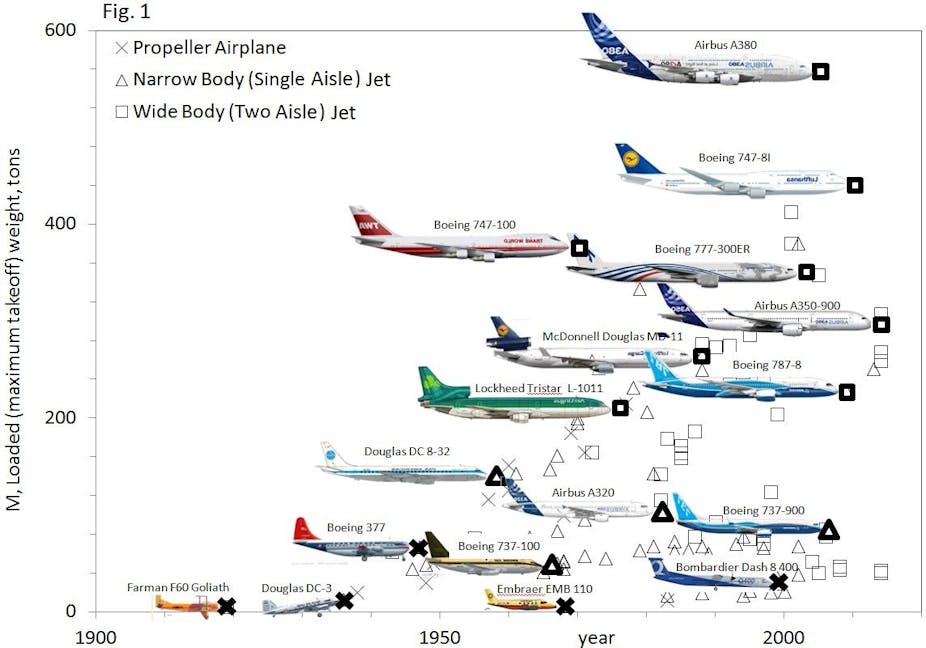People like to say that we cannot witness evolution because it occurs over timescales immensely greater than our lifetime. That’s incorrect. We can witness evolution all we want, in our lifetime, by watching other things that change and morph freely – for example the evolution of sports, or the evolution of technology.
Evolution in technology is the same as the evolution of a biological species. The ‘organism’ in this case is the human-and-machine species. Machines do not happen by themselves; they are created by humans, because of human needs, and it is humans that add the abilities of their creations to their own in order to improve them – to make their bodies move more easily, or more economically, more safely, or further over the earth. More technology tends towards more and better life.
Evolution is about facilitating flow, the movement of one thing over or past another. Flow systems, the designs created by this evolutionary process, change freely over time. As such, evolution is a physical phenomenon, not just a biological one. The changing organisational structures that facilitate greater and better flow are physical objects, whether animate or inanimate.
In an article just published in the Journal of Applied Physics, we documented the evolution of a single technology – aircraft. We predicted this evolutionary path based on the laws of physics and their application to how designs evolve in the natural world. This is the constructal law: for a flow system to persist in time (in effect, to live) its configuration must evolve to allow greater and easier access to its currents.
We showed that aircraft must have predictable (theoretical) design features that unite them with the birds and other flying animals. For example, larger aircraft must be faster, more efficient as vehicles and must cover greater distances. The engine weight must be proportional to the total body weight; this scaling is the same throughout animal design, where the size of the body parts driving the movement (muscle, heart, lung) is proportional to the body size.
Large or small, an aircraft must have a wing span that is proportional to the fuselage length. The fuel load must be proportional to the body size. The animal design counterparts of these human-designed, technological features are evident. Looking at how these evolutionary laws govern the current trend followed by aircraft until now, we can predict the same laws will govern how aircraft will change into the future.
We’ve used the constructal law to predict the design features of many other seemingly unrelated natural phenomena. For example, the shape of river basins (four tributaries feeding into one larger channel), vegetation (roots, trunks, branches, forests), animal design (body insulation, respiration, blood circulation, skeleton, and ability to swim, run, or fly) and the wheel as a natural rather than human design.
It has also explained human phenomena such as the evolution of sports (speed vs body size for sprint running or swimming, throwing sports such as baseball, golf and boxing), social organisation (rankings of universities and sports teams, urban design, city traffic), and the evolution of many types of technology such as electronic cooling, steam and gas turbines, power plants, refrigeration plants.
The view that emerges is that the phenomenon of evolution is much broader and more visible than simply biological evolution. The constructal law unites the evolutionary designs of the realm of animate creatures with those of the inanimate, social and engineered.
What works is kept. Architectures that offer greater and improved access to flow persist over time, and are joined by even better ones. Together, the vascular tapestry of old and new designs carries the global human flow – from the microscopic to the macroscopic level – easier and farther than the old alone. To return to the example, new and old designs for mass transport by air provide a more effective mechanism to aid mixing and flow of people around the globe more effectively than in the absence of new models.
Flow leads to better flow. Flow architectures are evolving right now, throughout nature and throughout our technologies, in accord with the constructal law. Evolution is one phenomenon of nature, and it belongs under physics, the biggest tent of science.

